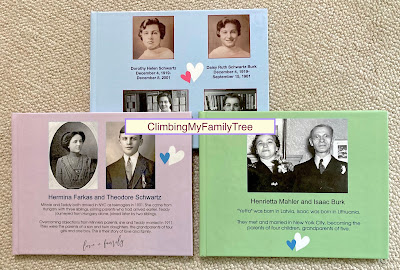Lo and behold, I believe I have solved a long-standing mystery: How did Floyda Mabel Steiner (1878-1948) meet master mechanic Brice Larimer McClure (1878-1948)? They were married on June 10, 1903, in Upper Sandusky, Ohio, where the Steiner family lived. But Brice was from Wabash, Indiana. Until now, my hypothesis was that his work for the railroad industry took him to Upper Sandusky. Turns out, that hypothesis was only partly correct, according to my latest research.
Newspaper social items
Using newspaper databases, I found Brice mentioned several times in a Huntington, Indiana paper, in columns about current and previous employees of the Erie Railroad. In 1899, several social notes said Brice (living in Huntington) regularly visited his family in his old hometown of Wabash, Indiana.
In March of 1902, this Huntington newspaper reported: "Brice McClure and Ott Christain, two former Erie machinists, were in the city today from Kokomo." Okay, Brice was no longer living or working in Huntington but he and his associate visited anyway. Seeing friends? Or . . .
Looking for Floyda, I found a social item from Huntington in September of 1902, with the newspaper reporting: "Miss Floyda Steiner, who has been a guest at the F.W. Rhuark home several weeks, returned to her home in Upper Sandusky, Ohio today."
Key FAN Club link
This rang a bell about Floyda's sister Etta Blanche, married to Erie railroad mechanic Frank W. Rhuark. I went back to the 1900 US Census for the Rhuarks in Huntington, Indiana. They had a roomer with them: Otto Cristman, a machinist just like Frank Rhuark. Just like Brice. Snippet at top shows the Census, names creatively spelled.
In the past, I had no idea who this roomer was...but it's now clear he was a key member of the FAN club: a work associate of both Frank AND Brice. This man was the missing link, a definite connection between Brice and Floyda's family.
Matchmaker sister and brother-in-law?!
Knowing that Brice and Ott had earlier worked for Erie RR, where Frank worked, and Ott once roomed with the Rhuarks, I conclude that Rhuarks were almost certainly involved in introducing Brice to Floyda, Blanche's sister.
Another reason for this matchmaker activity to occur away from Floyda's hometown is that she divorced her abusive first husband in 1901. Divorce was still uncommon and Floyda's family probably felt she had a better chance of meeting eligible men elsewhere. Thank you, Blanche and Frank, for setting the stage for Floyda and Brice to meet and marry.
"Surprise" is this week's 52 Ancestors genealogy prompt from Amy Johnson Crow. Never give up, and keep redoing your searches because new info becomes available all the time. I sure was surprised and happy to finally solve this family history mystery!














